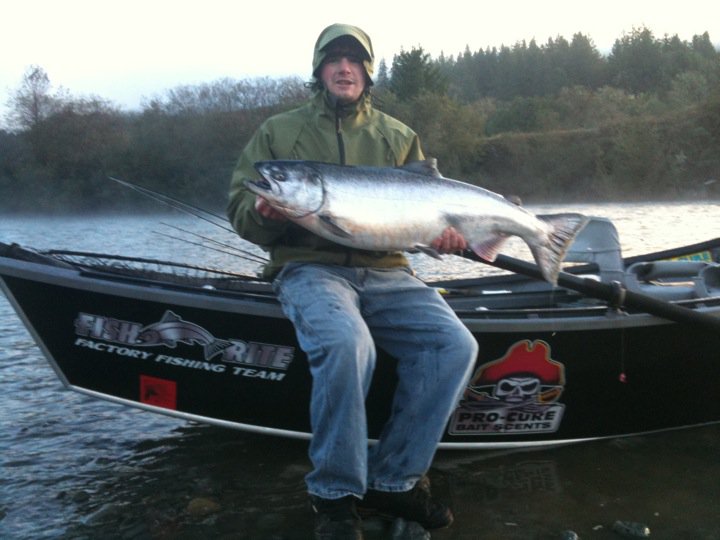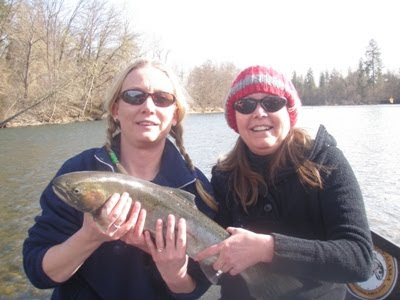
Seward Alaska Silver Salmon
By Andy Martin
Many places in Alaska are home to phenomenal silver salmon fishing. From Bristol Bay to Ketchikan, and all the rivers, streams and bays in between, willing-biting silvers are abundant, easy to access, and among the best pound-for-pound fighters to be found.
But in the heart of Alaska’s Gulf Coast, one small fishing community rightfully claims the title “Best Silver Salmon Fishery in the World.” The numbers back it up.
Seward, a fishing, cruise ship and tourist destination on the ocean side of the Kenai Peninsula, an easy two-hour drive from Anchorage, plays host to staggering silver salmon catches. Each summer, charters and private boats enjoy Alaska’s premier saltwater coho fishery. A mind-boggling 100,000 silvers are landed by the sport fleet in Seward each year.
“The biggest catch of coho in Seward was 174,000,” says Dan Bosch, the Alaska Department of Fish and Game biologist responsible for the area. “The average catch is around 100,000.”
Seward anglers enjoy generous six-fish daily limits for silvers. The local chamber of commerce organizes the annual Seward Silver Salmon Derby, one of the oldest and most poplar fishing derbies in the state. The biggest fish takes a cash prize of $10,000. Thousands of dollars in other prizes are awarded. A tagged fish worth $50,000 is marked each year.
While Seward also has one of the best halibut fisheries in Alaska, with an impressive number of 100-pounders brought back to the docks each season, it’s the coho fishery that gets most of the attention.
“The fishery starts earlier than any other coho fishery in the state,” Bosch says.
From mid-June through October, silver salmon feed in the nutrient-rich waters off Resurrection Bay. Early in the season, many of the fish weigh only 4 or 5 pounds. By late summer, they are pushing the mid- to upper teens. Some of the salmon are bound for the creeks at the head of the bay near Seward. Most, however, return to hundreds of creeks flowing into the Gulf of Alaska, and a sizable portion originate in Prince William Sound. They are drawn to the two capes that create Resurrection Bay because of the abundant food found there.
“It’s a very unique area,” Bosch says, describing the towing cliffs that jet straight up from the ocean floor to form the Kenai Peninsula. Water depths quickly change from more than 1,000 feet to 100 feet, creating current changes, upwelling, and Alaska’s most productive food chain for coho salmon.
Charter boat captains like Randy Wells of the Seward Fish Co. spend the entire summer getting customers into the bounty of ocean silvers.
“There’s nothing like it,” Wells says. “There are times when it’s non-stop action and we limit out in less than an hour. It sometimes takes longer to clean them than it does to catch them.”
Aside from thriving wild populations of silvers, the Seward fishery gets a boost from hatchery releases in Resurrection Bay and Prince Williams Sound. The state releases 240,000 juvenile silvers near Seward. A private hatchery, with funding from the local chamber and charter boats fleet, adds another 400,000.
Mooching is by far the most effective method for catching Seward’s silvers. Some anglers troll, but with the fish schooling and actively feeding, jigging hoochies or Spin-N-Glos with small herring strips accounts for the bulk of the catch.
Bait stacks up at almost every point where Resurrection Bay meets the Gulf of Alaska. The salmon are almost always nearby.
Wells has his customers lower their bait baits 20 to 50 feet straight down, and then slowly reel and jig the baits toward the surface. The silvers can’t resist the offering.
“It’s chaos,” Wells says. “You have two, three or four fish on at a time. We’re netting two at a time. It’s Alaska’s best ocean salmon fishing.”
The silvers first show up around Montague Island in early May. By mid-June, a few fish are being caught at Pony Cove, Resurrection Bay’s most productive and popular coho hot spot. Sometime in July, hundreds of thousands of silvers will gather in the bay, providing fish-after-fish-after-fish action for nearly every boat on the scene.
Then, usually in August, the salmon spread out, still feeding, but not concentrated in the same immense numbers at Pony Cove. Captains like Wells keep close tabs on their movements, continuing to catch limits through the derby, this year slated for Aug. 14-22, when may of the fish are running 12 pounds to as big as 20 pounds.
Charters and information
For information on Seward salmon fishing, visit www.fishsewardalaska.com, or call Seward Fish Co. at (907) 947-3349.











